How Much Is Scope Camera
The best spotting scopes in 2022 : get a closer expect at sports, nature and wild animals
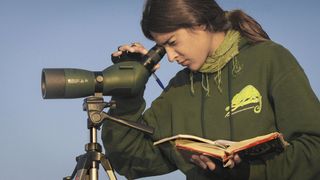
The all-time spotting scopes are perfect for wildlife watchers, sports fans and even star-gazers. Also known equally fieldscopes or digiscopes, they are similar a one-half mode firm between a monocular and a telescope, offering high magnifications while still being compact and portable.
What to look for in a spotting telescopic
The main advantage of a spotting telescopic over a monocular is magnification. Monoculars don't generally exceed a magnification of about 10x, and if they exercise,they will be extremely heavy. Spotting scopes, in contrast, offering powerful magnification but are typically slimmer and more portable. Some of the best spotting scopes accept zoom for changing the magnification.
Many spotting scopes can even exist used for photography by hooking up a camera, a practice known equally 'digiscoping'. But whether yous're viewing with the naked eye or a camera, the magnification means it's worth checking out the best tripods (opens in new tab) to go a properly steady prototype.
Spotting scopes are available at all different price points, and in this guide we've included models for all budgets, from inexpensive entry-level scopes to high-cease optical marvels like the Zeiss Conquest Gavia 85 (opens in new tab). If you are in the market for a premium scope, yous may too desire to bank check out the Leica APO-Televid 82 (opens in new tab).
• Direct or angled body? When you pick a spotting telescopic, you can cull from either a straight or an angled body. With directly scopes, the body and eyepiece prevarication on the same optical aeroplane, which allows you lot to await direct through the eyepiece at your intended subject. Angled-body spotting scopes are more comfortable utilize when lying down or sitting, and can save having to crane your neck.
• Magnification range: Spotting scopes can 'zoom' in and out, the specs quote the zoom range as a minimum-maximum value. A higher magnification range will enable you to use the scope for a broader range of subjects.
• Objective lens size: A larger lens will, broadly speaking, provide a meliorate, clearer epitome, especially in depression light, though this volition also make the spotting scope bigger, heavier, and potentially more expensive.
The best spotting scopes in 2022

This is a not bad mid-priced model for wildife watchers. It comes kitted up with its own travel tripod, and a mount for using the scope from your car. The xx-60x range gives it versatility for utilize with different animal and bird species, with a decent 65mm discontinuity that is more than satisfactory for daylight viewing. This spotting scope offers IPX7 level waterproof construction with O-ring sealed eyes, ensuring everything stays reassuringly dry in all weather conditions.
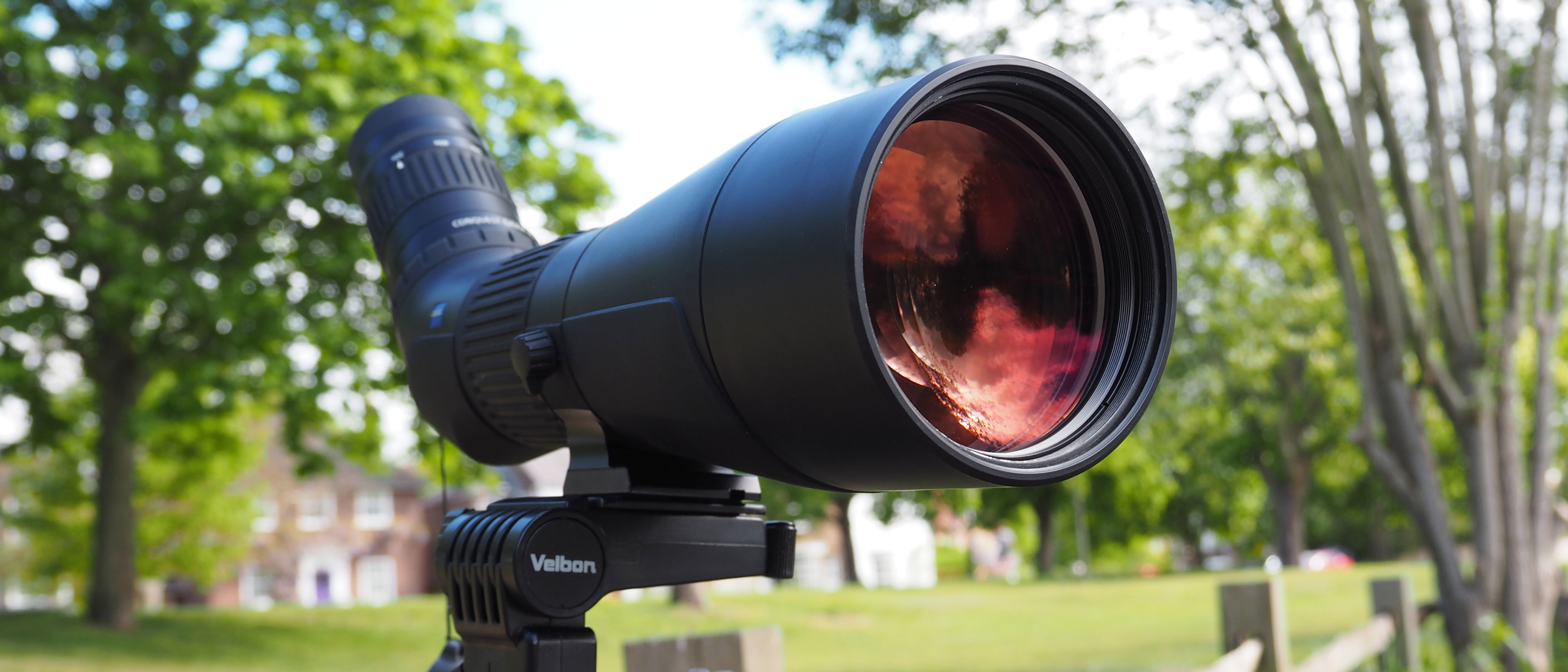
Any photographer will recognise the proper noun Zeiss as beingness the bee's knees for optical quality, so selecting a Zeiss scope for wild fauna and nature photography has got to exist a sensible conclusion. Of course, Zeiss don't come up cheap, but the Zeiss Conquest Gavia 85 is versatile due to a rapid focus mechanism and a close near-focus setting, and then even observing smaller objects or wild fauna is claimed to exist easier than ever.
Of course, you only have to expect at the name of the production to see one great reward – namely a whopping 85mm-diameter objective lens, useful for depression-light observation. Couple this with a zoom-magnification range up to 60x and a fogproof, nitrogen-filled structure, and you've actually got something.
Read more: Zeiss Conquest Gavia 85 review (opens in new tab)
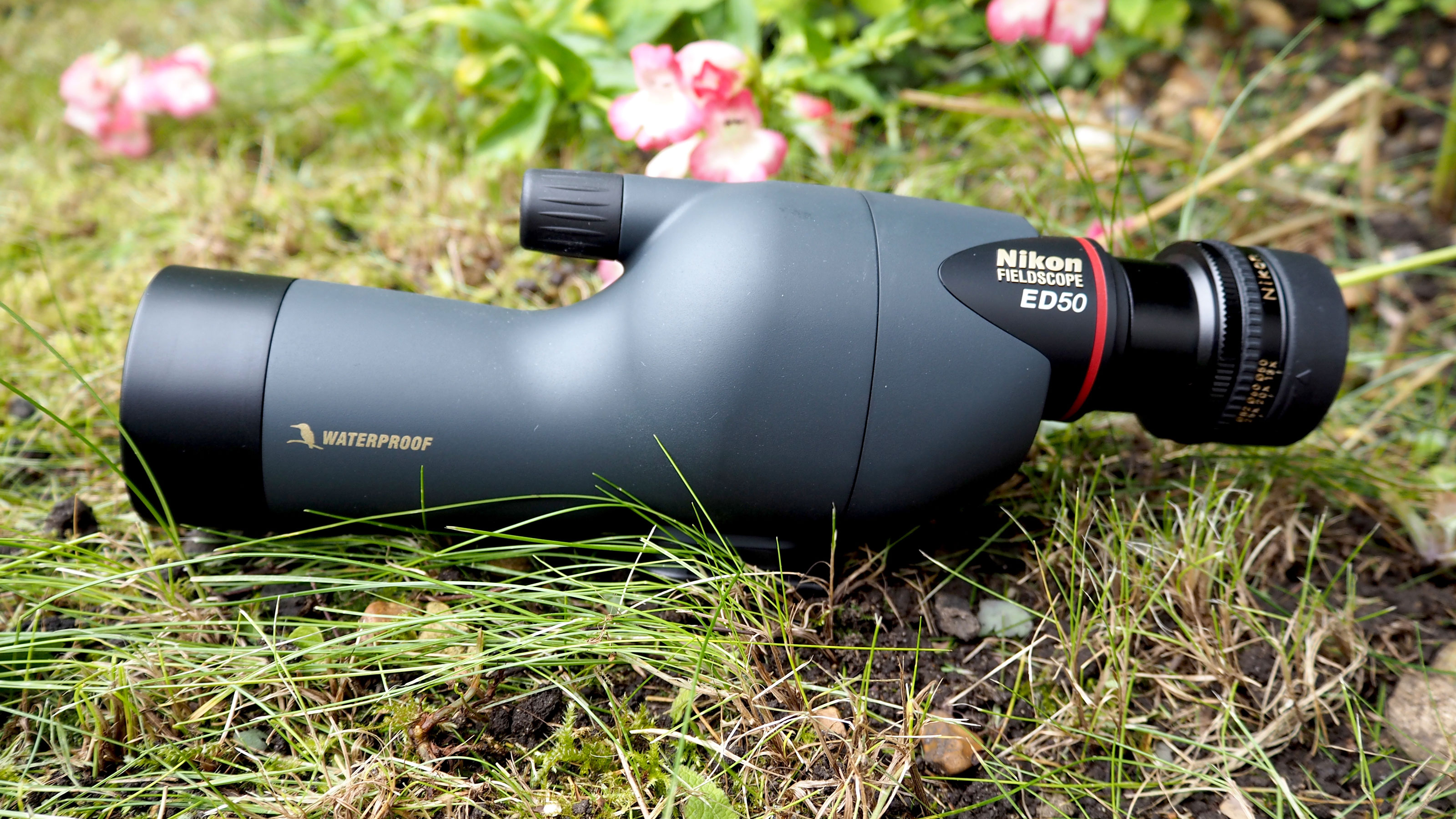
It's no surprise that camera and optical manufacturer Nikon produces scopes with the ability to attach a photographic camera and enjoy the art of digiscoping (opens in new tab). Indeed, Nikon has its own digiscoping system. There'south a lot of option in this field, but the Nikon Fieldscope ED50 offers a 50mm objective lens (to which a 55mm filter can be attached if desired) and is both relatively compact and lightweight with information technology.
It also ticks the boxes for the regular must-haves, such as a fog-banishing nitrogen-filled construction and built-in waterproofing (information technology can fifty-fifty be submerged up to a metre for five minutes) for all those times when the weather doesn't play ball, along with a multilayered lens coating to ensure superb light transmission and, ultimately, high-resolution images.
See full Nikon Fieldscope ED50 review (opens in new tab)
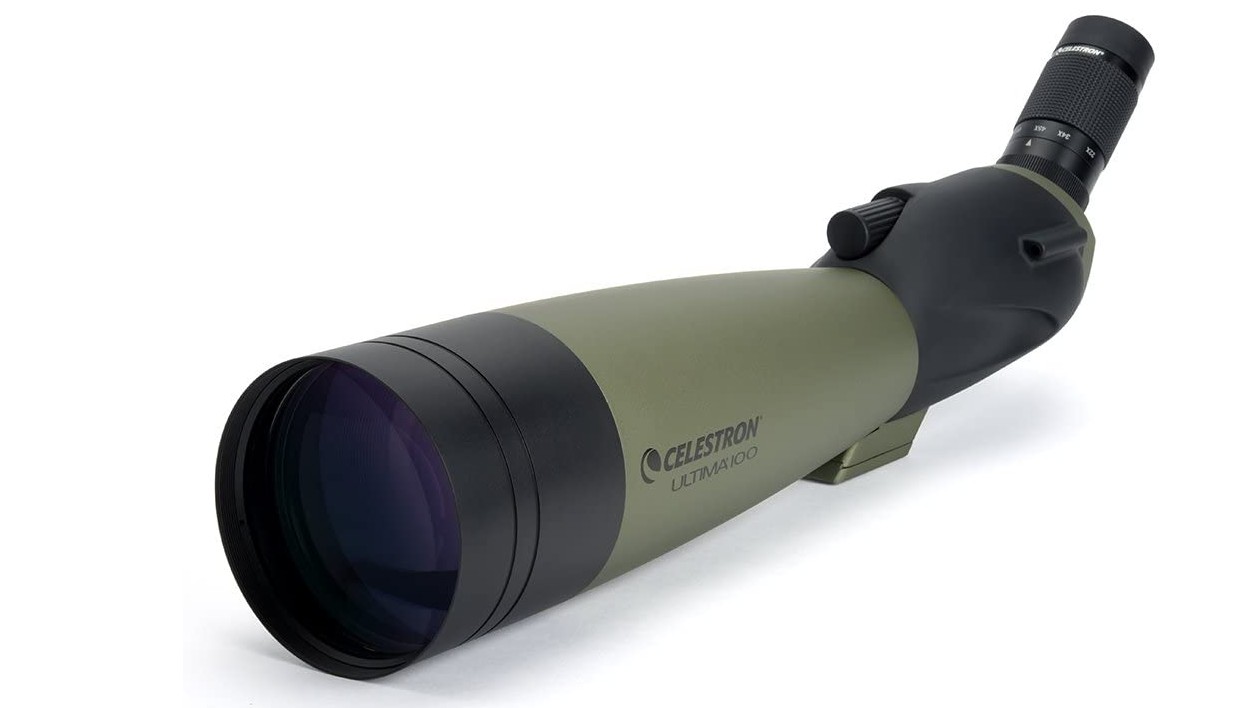
Weighing 2kg and sporting a 100mm bore, this is i of the biggest and bulkiest scopes on our list, and so it wouldn't exist great for, say, activity photography. Merely for more stationary pursuits like stargazing and watching wildlife from a distance, information technology's a great option.
The largest aperture scope in the Ultima line, the 100mm Ultima offers more than than fifty per cent brighter images than the 80mm version, so it's a amend selection for low light shooting. The 100mm refractor features a 45° viewing angle and offers excellent multi-coated eyes packed into a portable and durable refractor pattern and comes standard with an angled, 22-66x zoom eyepiece. A soft conveying instance is also included.
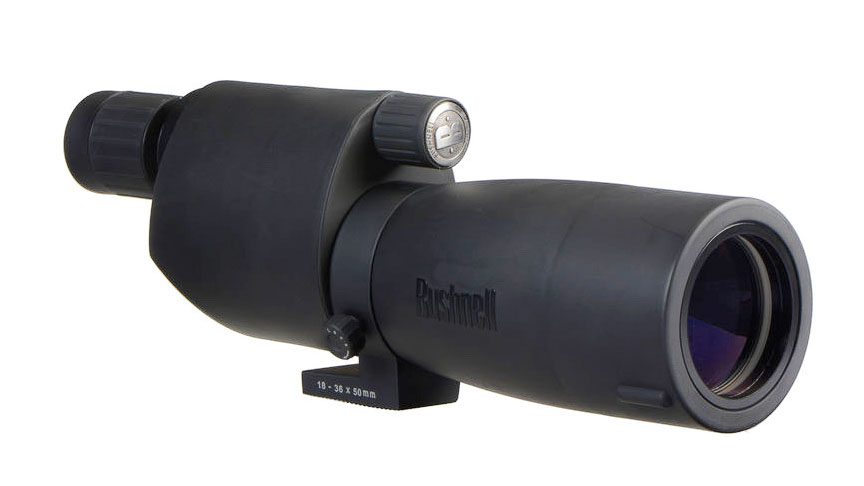
This sleek-looking spotting scope solution comes with a straight eyepiece and won't interruption the depository financial institution. Despite the budget price, the Bushnell Sentry 18-36x50 is also impressively waterproof, with proper O-band sealed optics so the internal workings stay fully dry, fifty-fifty when the Bushnell is submerged in water.
In terms of the optical operation, multi coatings help ensure reflections are avoided and all 'air to drinking glass' surfaces evangelize bright, high-dissimilarity images. The porro prism system also features twist-up eyecups and a comfortable 16mm eye relief. Weighing 877g despite the wet-sealed build, this is nevertheless a relatively manageable and portable spotting telescopic.

Bitten by the spotting scope bug? So this high-end 'Viper' scope option from the Vortex make, offering up to 60x magnification plus a large and bright 85mm objective lens, may tempt you lot. It's not inexpensive, but this sleekly designed 45° angled scope part justifies the outlay past offering HD drinking glass elements that promise knockout color fidelity, superb light transmission and edge-to-edge sharpness.
Fog proof and waterproof with it, prophylactic armor aids grip, while fast and precise adjustments tin can exist made via the cleverly dual geared focus system. This is a sophisticated option, and, given the request price, we're pleased to see additional peace of heed provided via an unlimited life warranty.

The Celestron Regal M2 65ED is a premium spotting telescopic that is nevertheless fair value in its cost range, offering suitability for everything from bird watching in the solar day to watching the heavens at dark. Celestron claims that this second-generation unit of measurement has reduced the overall weight of the spotting telescopic by more fourteen per cent, while nevertheless providing a rugged magnesium blend torso.
Further advantages include the fact that it has an upgraded dual-focus machinery, which enables users to bring their discipline into focus two times faster. You lot tin can factor in premium features such as Extra Depression Dispersion (ED) glass found in the best camera lenses, and a photographic camera can be fastened to the Regal using an included T-adapter band for DSLRs, so it'southward a scope with plenty of, er, scope.
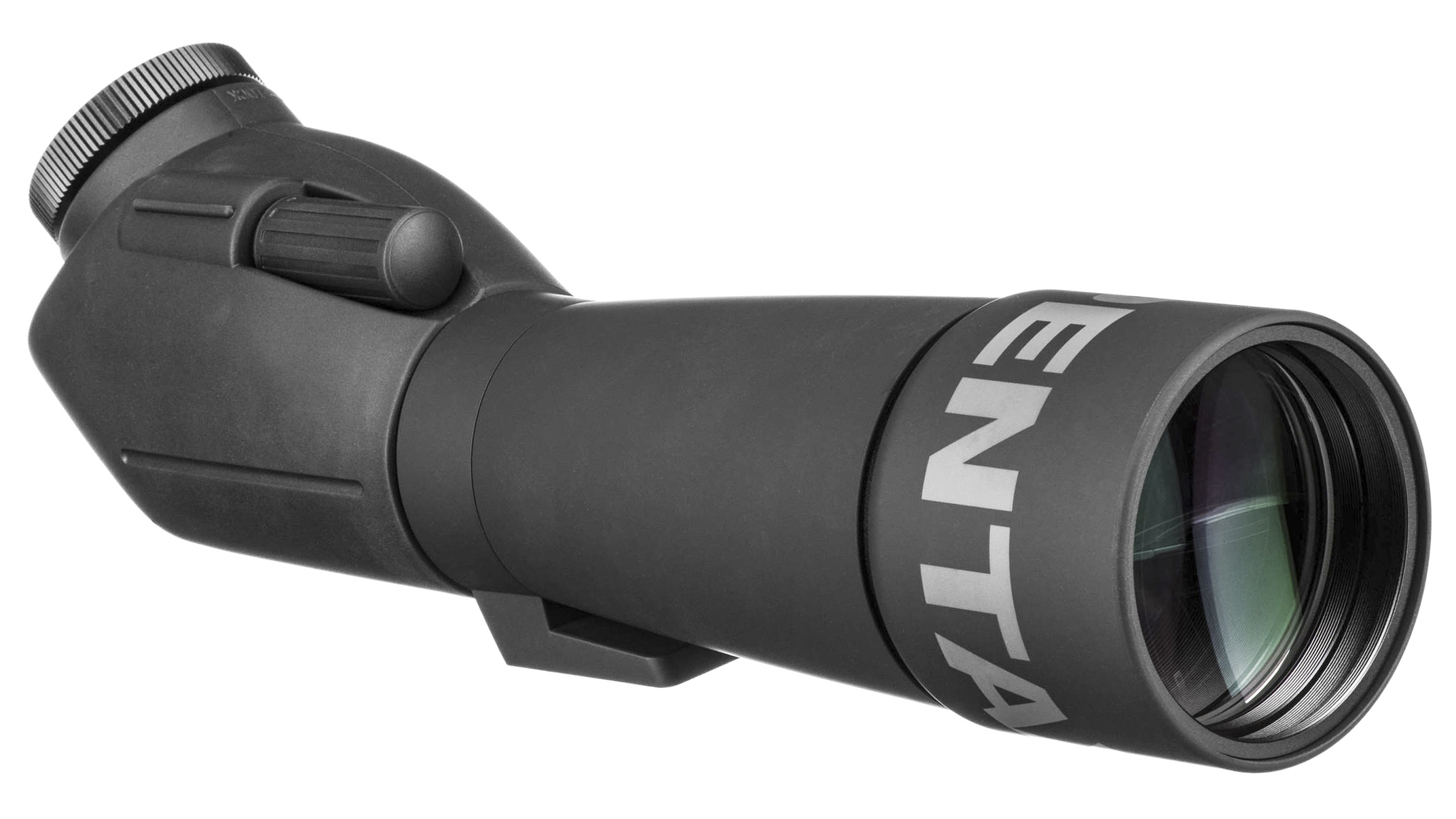
Spotting scopes are outdoor devices, so it's always welcome to run across 1 that'south been built with the outdoors in mind. The Pentax PF-fourscore EDA 80mm, much like Pentax's DSLRs, is made with a durable, well-armoured torso that's rainproof and provides a secure grip, making information technology perfect for roughing it in the countryside.
Information technology's no slouch internally either, with a big objective lens ensuring the resulting image is bright and crystal clear. The inner elements have been "nitrogen purged", a procedure designed to prevent them from fogging up by removing fifty-fifty the tiniest traces of wet. It's relatively expensive fifty-fifty before you lot add on the toll of the required eyepiece, but if information technology fits into your budget, the Pentax PF-lxxx EDA 80mm is an excellent spotting telescopic.

I of Hawke's relatively new spotting scopes, the Hawke Sport Optics ix-27x56 Nature-Trek is super-light and easy to carry effectually with you. It'due south on the lower cease of magnification compared to the other scopes on this list, but if you can live without a little extra distance then you get a lot back in return, non least of which is a lower asking price.
Tremendously light and like shooting fish in a barrel to carry, this is an angled spotting scope that's well equipped for inclement weather. Its internals are nitrogen-purged to prevent fogging, and the outer casing is weatherproof. The especially coated eyes also provide excellent clarity and light transmission, reducing heart fatigue and making the scope more than pleasant to use, even for long periods.

Like the Hummingbird it takes its name from, the Celestron Hummingbird ix-27x56 ED spotting telescopic is small and mobile, with a very manageable weight of 590g. That ways information technology's as well ideally suited to taking on your travels. It will fit into a roomy jacket pocket, a rucksack (opens in new tab) or shoulder handbag, and can exist stashed in carry-on baggage.
At its everyman 9x magnification level, it can even substitute for a monocular, giving you, in effect, two products in one, though the angled viewfinder may not exist platonic for handheld spotting. This device is waterproof and nitrogen filled to forestall fogging, and is tripod, monopod and window-mount adaptable, giving it an extra degree of versatility. In summary, if yous're looking for a more portable alternative to a full-sized spotting telescopic, this 'bird is difficult to beat out. What's more, it'southward also photographic camera-adaptable for those into digiscoping.
How we test spotting scopes
We exam spotting scopes inside the field on moving subjects and landmarks for our buying guides and look for a scope that combines magnification, adept construction and image clarity, which can be used and withstand a 24-hour interval'due south bird watching or wild animals spotting. Upkeep is besides an indicator and inside this guide you will find spotting scopes to accommodate everyone'south upkeep .
Read more
The best binoculars (opens in new tab)
10 best monoculars (opens in new tab)
Best night vision goggles and binoculars (opens in new tab)
The best lenses for bird photography (opens in new tab)
The best telescopes for astrophotography (opens in new tab)
Best photographic camera for wildlife (opens in new tab)
The all-time portable hides for wildlife photography (opens in new tab)
All-time trail cameras (opens in new tab) for wildlife photography and nature watching
The best tripods for travel (opens in new tab)
Astrophotography: everything you need to know (opens in new tab)
Related articles
Source: https://www.digitalcameraworld.com/buying-guides/best-spotting-scope
Posted by: milesupor1961.blogspot.com


0 Response to "How Much Is Scope Camera"
Post a Comment